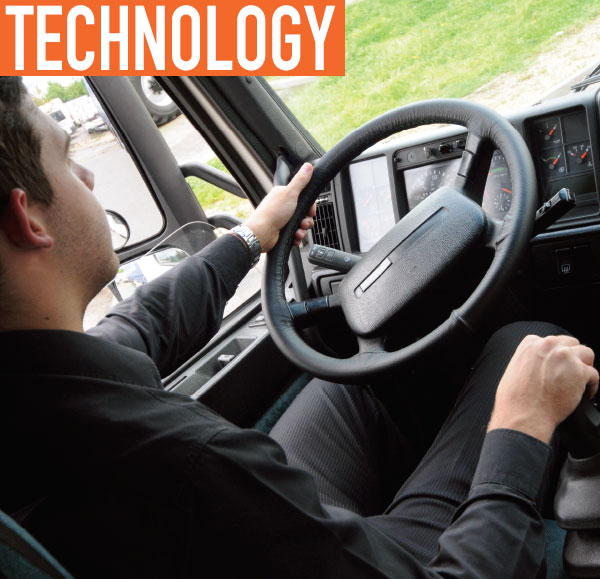From the early stages of learning how to walk, kids learning new games at recess, or adults mastering a new task at work—everyone is constantly coached. It’s just a way of life. Yet at some point, people get comfortable in their daily routine and don’t feel the need to improve, or they think of coaching as a disciplinary measure.
However, nothing could be further from the truth. Particularly, when someone has had the same job for many years, it’s easy—and even normal—to go through the motions and not realize the bad habits they might have formed.
As part of a fleet’s overall safety program, coaching is fundamental, and it’s crucial to get it right. So, the questions remain: How do fleets introduce coaching into the work environment and company culture without giving a negative connotation? How do companies maintain coaching as part of their operations, and how are results measured as a result of efforts made?
AT THE START
For many drivers, they learned the basic skills they use today at 16 years old when they got their driver’s license. Those skills—as well as good and bad habits—were embedded in their daily routine. New skills were added when they acquired their commercial driver’s license (CDL), and that could have been 20, 30, or even 40 years ago. During all that time, it’s easy to develop lax habits, such as skipping vital processes or procedures that are viewed merely as guidelines. With a lack of enforcement from management, drivers can overlook key safety measures.
When fleets first establish a coaching program, it’s important to know where to start, and looking critically at current safety protocols is a good first step. Once that’s decided, next up is understanding what effective coaching looks like. Companies must realize one coaching style will not fit every driver. Having safety managers who can adapt safety messaging in ways that resonate with the driver is key to having a successful coaching program.
And like any program, it’s critical to ensure success with an established method of measuring results.
In this series of articles, we’ll examine different aspects of coaching and provide tips and tricks to improve coaching effectiveness to keep your drivers safe. Let’s get started!
COACHING
Before starting a coaching program, it’s important to understand why you’re coaching and best practices. A necessary first step is ensuring all levels of the company are aligned with answers to the following questions:
What is Most Important to My Fleet?
• Am I willing to sacrifice safety for the sake of operations?
• Am I willing to sacrifice safety for the sake of short-term profitability?
• There is no customer or amount of money worth someone’s life. If you are dedicated to operating safely, the business will come.
Why Are We Coaching?
• Are we trying to build a file for upcoming litigation?
• Are we interested in improving the overall safety of our fleet and avoiding litigation by not having a collision in the first place?
• There is no better fix for collisions than prevention. However, if a collision does occur, there is plenty of coaching data to help make a case.
How Are We Going to Coach?
• Are you able to meet on a timely and consistent basis or is coaching a second priority after workload or after your driver was on the road for a long period of time?
• Are you able to communicate openly with your driver to effect change in your fleet?
• Are you willing to receive feedback from the driver on coaching style and adapt it?
Body language and mannerisms matter just as much as what is said. When coaches are meeting with drivers, show them you care about their safety with an open dialogue. When you create an area of trust and openness, you are building a relationship where drivers feel comfortable explaining situations, thus will be more receptive to feedback.

The smartDrive video-based safety program helps reduce collision frequency, lower fuel consumption and operational costs, and helps keep drivers safe.
Many safety managers and coaches were drivers at one point. However, a staggering number of coaches never received proper training. Even if formal training hasn’t been issued, having coaching guidelines ensures fairness and an unbiased review of drivers’ performance. To guarantee coaches are as effective as possible, be sure they have the following tools that are integral to a successful video-based safety program:
• Efficiently managed service program—allows coaches to spend time meeting with drivers rather than reviewing non-priority driving event videos
• Accessible response center—provides coaches with the critical information they need to coach effectively and measure improvement over time
• Easy, yet powerful, coaching workflow—provides three simple steps to success
o Prepare—quickly identify
skills to review with driver
o Coach—review videos
with driver
o Summarize—make notes of
session outcome and next steps
• Handy driver mobile app—enables remote self-coaching
Next month, we’ll delve into the value of expert analysis in the coaching process.
FOR MORE INFORMATION
The contents of this article was adapted from SmartDrive’s eBook, “Coach Your Drivers to Safety and Success.” To gain more insights into coaching, download the eBook by visiting the SmartDrive website at www.smartdrive.net.
MODERN WORKTRUCK SOLUTIONS:
OCTOBER 2019 ISSUE
Did you enjoy this article?
Subscribe to the FREE Digital Edition of Modern WorkTruck Solutions magazine.





